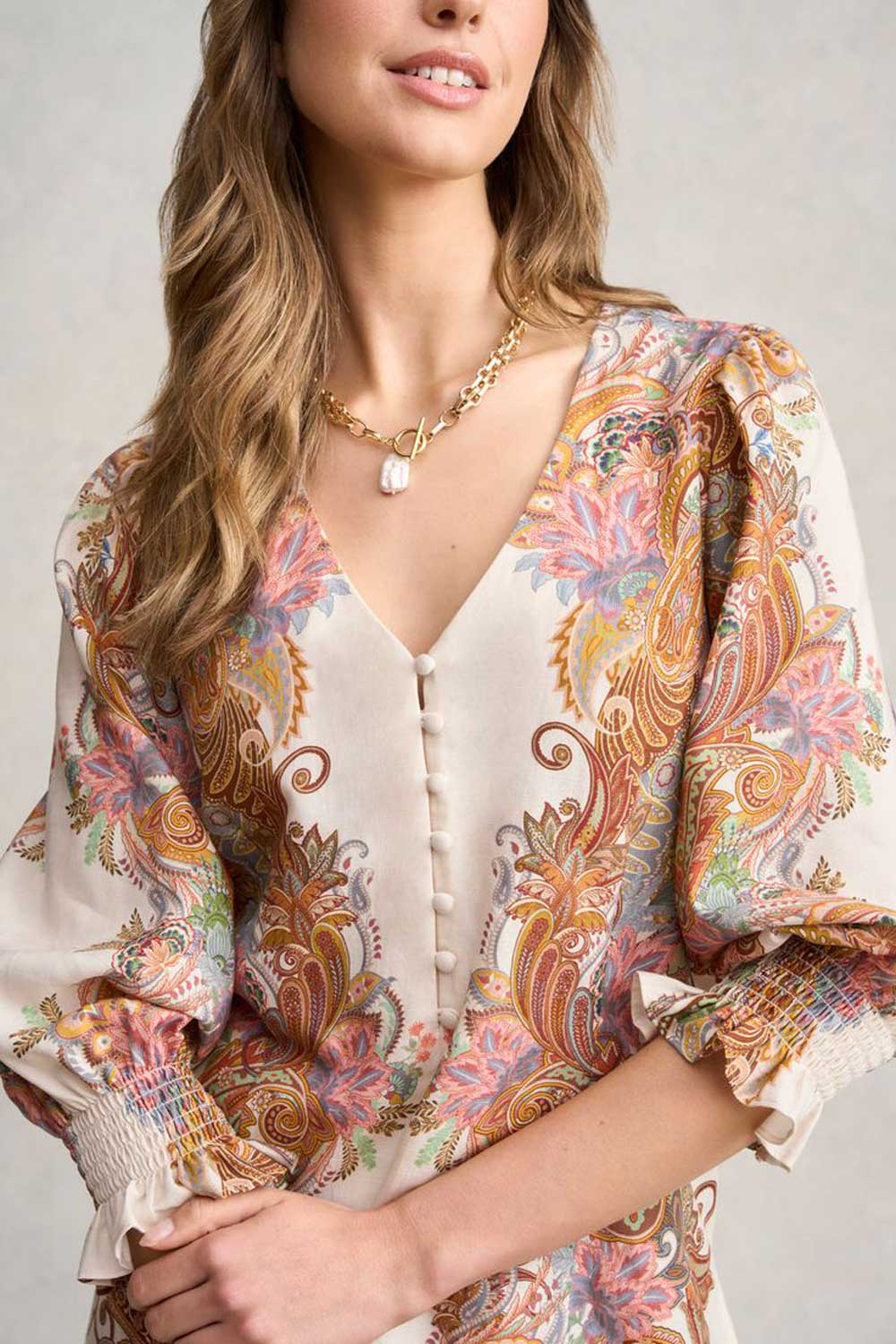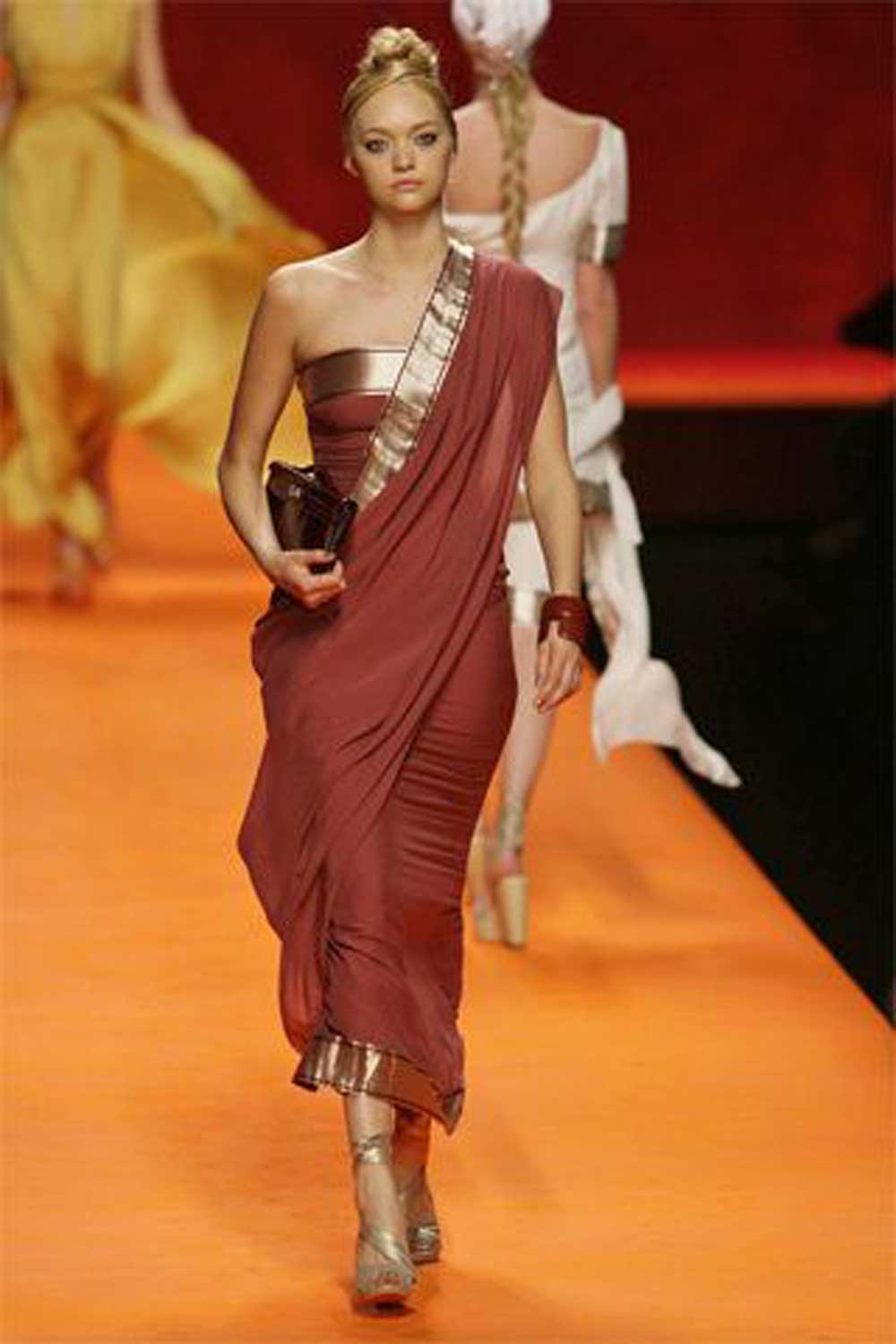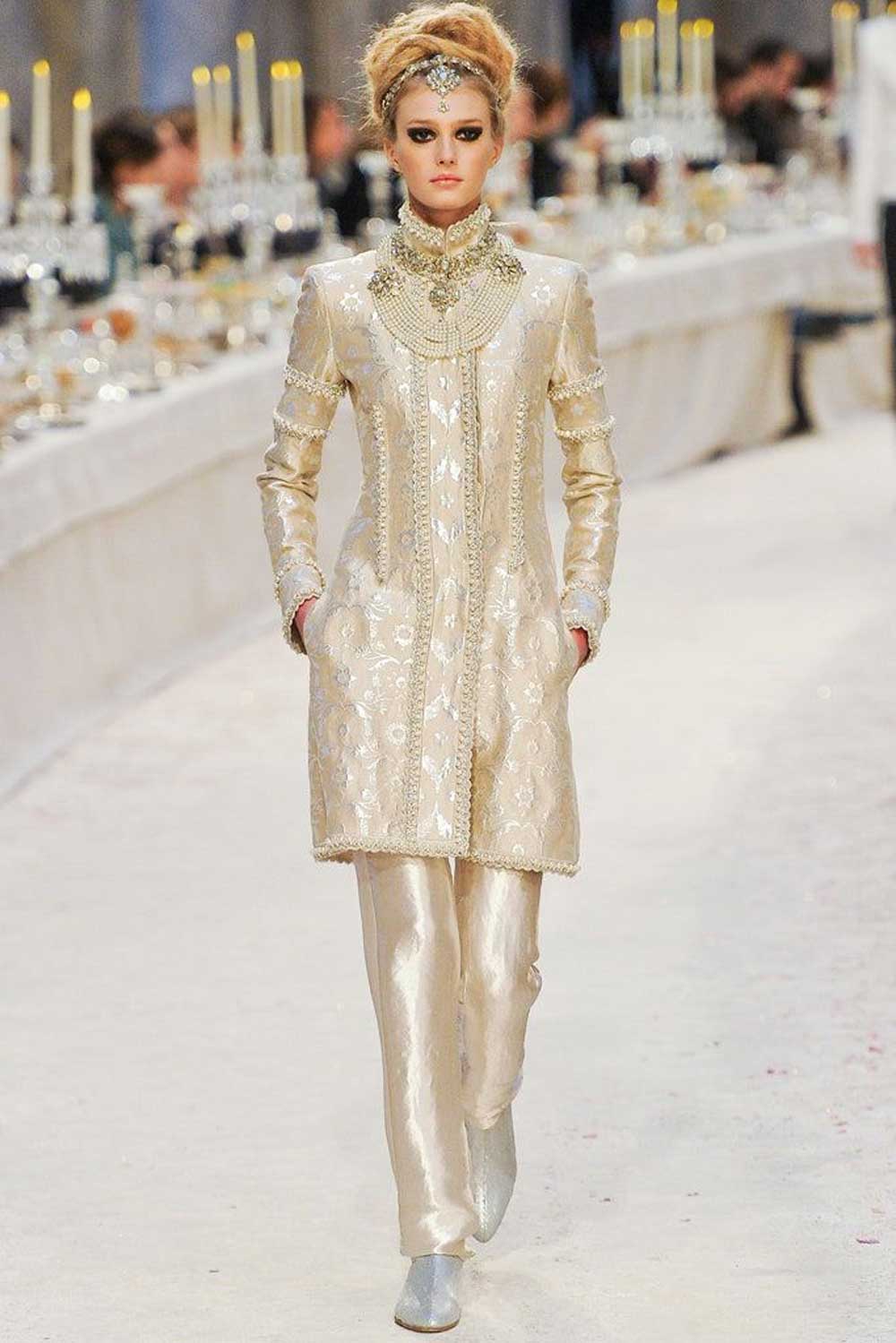When Prada debuted a pair of leather sandals that bore an uncanny resemblance to Kolhapuris, India’s iconic handmade footwear, it wasn’t just a nod to craftsmanship. It was yet another example of how Indian design continues to ripple through the global fashion industry. From intricate embroidery to ancient dyeing techniques, Indian culture has long served as a rich (and often uncredited) wellspring for international fashion houses. But as conversations around cultural appropriation and ethical sourcing gain momentum, the spotlight is slowly shifting, not just to the products, but to the people and places behind them.
A Quiet Yet Persistent Influence
India’s imprint on global fashion is far from new. For centuries, Indian cottons, silks, and dyeing techniques like Ikat and Bandhani have influenced what the world wears. European aristocrats wore Kashmir shawls as a sign of wealth in the 18th century. The paisley motif, ubiquitous in Western fashion, is originally derived from these same Kashmiri shawls, known for their fine pashmina weave and curvilinear boteh design.
‘For decades now, global fashion has looked to India for inspiration. Our textiles, embroideries, silhouettes, rituals even our pigments and philosophies have quietly made their way into international collections. Our crafts have been referenced, reimagined, and repackaged by luxury houses for decades. Bandhani becomes 'boho', Zari becomes 'metallic threadwork' & mirrorwork becomes a seasonal trend,’ says Aprajita Toor, Founder and Creative Director of the designer footwear label Aprajita Toor.

Toor’s reimagination of the Kolhapuri has found love among many owing to her knack for making it quirky, modern, and current.
Her take on the ‘Pradapuri’ phenomenon? Acknowledgement is a must. ‘We are a land of makers, where every stitch tells a story, every silhouette holds symbolism, and every craft carries generations of skill. This richness reflects in our craftsmanship, whether it’s a humble Kolhapuri or a couture lehenga. So yes, by all means, let the world be inspired. But let it also be informed. Inspiration without acknowledgement is appropriation. Because true luxury lies not just in how something looks, but in knowing where it came from, who made it, and why it matters,’ adds Toor.
Apart from the Kolhapuri, block prints from Rajasthan and Gujarat have also found their way into luxury resort wear collections season after season. And brands from Etro to Isabel Marant have used mirrorwork and traditional embroidery in their collections, often rebranded as ‘boho chic’ or ‘ethnic-inspired.’
Prada’s Kolhapuris: A High-Fashion Déjà Vu

Prada’s Spring/Summer sandals, which resemble Kolhapuris in form and finish, have reignited conversations about where inspiration ends and appropriation begins. For many Indian consumers, the sight of a Kolhapuri, typically available at a local bazaar, transformed into a statement piece raises questions of visibility and fairness. While fashion is by nature cyclical and cross-cultural, acknowledgement and collaboration go a long way in showing respect for the origin cultures.
The 'Scandinavian' Scarf... That’s Basically a Dupatta

Another trend that flew under the radar is the so-called Scandinavian folk scarf, a silk scarf printed with floral motifs, tied under the chin. Touted by fashion influencers as a Nordic revival, the look mirrors the way Indian women have worn dupattas for decades. Not just as modesty accessories, but as protection against heat and dust.
The idea of rebranding long-standing cultural practices into Western trends without context reflects a deeper issue in fashion’s gaze, one that often romanticises the exotic but overlooks the original.
The Paisley: A Colonised Export

The paisley print, known for its teardrop-shaped motif, traces its origins to Persia, where it was called ‘boteh’ and symbolised fertility and eternity. The motif was adopted and refined in India, especially in Kashmir, where it became a prominent design in handwoven shawls during the Mughal era. These intricately woven Kashmiri shawls were highly prized in Europe from the 17th century onward. By the 18th and 19th centuries, the pattern was replicated in Paisley, Scotland, through industrial techniques, giving the design its now-global name ‘paisley.’ However, its deep cultural and artisanal roots lie in the handloom traditions of Kashmir.
When Hermès Went to India

In the Hermès Spring 2008 Ready-to-Wear Collection, Jean Paul Gaultier turned to India for inspiration, crafting a runway that paid bold homage to the country’s rich sartorial traditions. From the very first look, Indian elements were unmistakable- models sported turbans or intricate top knot hairstyles styled to resemble them, setting the tone for a collection that seamlessly fused French luxury with Indian aesthetics.
Gaultier’s interpretations included tunics richly with gold borders, Nehru jackets styled over jodhpurs, and sari-inspired drapes that modernised Indian silhouettes for the global stage. Gaultier’s collection is a key example of how Indian fashion vocabulary, whether through silhouettes, textiles, or accessories, has long captivated international designers, shaping the visual language of global luxury fashion.
A Maharaja-Inspired Moment in Haute Couture

For Fall 2012, Karl Lagerfeld took Chanel on a luxurious detour to India with the Paris-Bombay Métiers d’Art collection. A tribute to the grandeur of Indian royalty, the show featured bandhgala-inspired kurtas, brocade tunics, draped skirts, and lamé leggings, all styled with an unmistakable Chanel twist- tweed jackets adorned with pearls, crystals, and over-the-top jewellery. While rich in aesthetic, the collection walked the line between homage and high-fashion fantasy, spotlighting how India’s regal past continues to influence Western couture.
Why Giving Credit Is Necessary
The line between appreciation and appropriation is a fine one, but intent matters. When brands draw from Indian crafts and call it inspiration, but never cite the source or compensate the artisans, it erases centuries of skill and cultural memory.
Recognition matters. So does fair compensation. Not just for the sake of justice, but for the survival of the craft itself. With younger generations of artisans leaving traditional trades due to poor pay and lack of visibility, the global fashion industry has an opportunity and a responsibility to rewrite that narrative.
The Takeaway: Fashion With Context
Indian craft isn’t a trend. It’s a legacy. And when the world’s most influential brands borrow from it, they owe it not just homage, but involvement. Whether that means co-creating with Indian artisans, crediting cultural origins, or ensuring fair trade practices, it’s time to move beyond the aesthetic and embrace the story, the maker, and the meaning.
After all, inspiration is free, but impact should be shared.